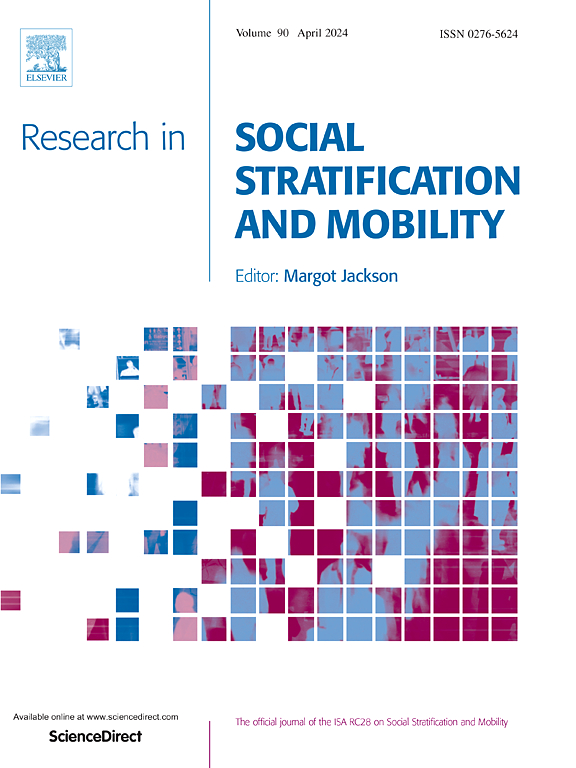Double disadvantage of Black, Hispanic, and Asian American women in earnings, revisited
IF 2.7
1区 社会学
Q1 SOCIOLOGY
引用次数: 0
Abstract
Prior literature suggests that women of color experience unique disadvantages as women and as racial minorities. However, empirical studies that hypothesize an additional disadvantage for women of color in personal earnings have not found supporting evidence. This study explores the family contexts and the local labor market conditions by which double disadvantage is mitigated. Using the 2015–2019 American Community Survey, we uncover a paradoxical pattern that the stronger the power of race in accounting for earnings inequality among men in a local labor market, the weaker double disadvantage married women of color experience. The relative performances of women of color compared to White women in terms of personal earnings, annual work hours, and hourly earnings are positively associated with the strength of race in explaining earnings inequality among men across local labor markets. No such paradoxical patterns are persistently evident among cohabiting or single women. The implications of these findings are discussed.
黑人、西班牙裔和亚裔美国女性在收入上的双重劣势再次被提及
先前的文献表明,有色人种女性作为女性和少数族裔,经历着独特的劣势。然而,假设有色人种女性在个人收入方面存在额外劣势的实证研究并没有找到支持证据。本研究探讨了减轻双重劣势的家庭背景和当地劳动力市场条件。通过2015-2019年美国社区调查,我们发现了一个矛盾的模式,即在当地劳动力市场中,种族对男性收入不平等的影响越强,有色人种已婚女性的双重劣势就越弱。与白人女性相比,有色人种女性在个人收入、年工作时间和小时收入方面的相对表现,与解释当地劳动力市场中男性收入不平等的种族力量呈正相关。这种矛盾的模式在同居女性或单身女性中并不明显。讨论了这些发现的意义。
本文章由计算机程序翻译,如有差异,请以英文原文为准。
求助全文
约1分钟内获得全文
求助全文
来源期刊
CiteScore
7.80
自引率
6.00%
发文量
46
期刊介绍:
The study of social inequality is and has been one of the central preoccupations of social scientists. Research in Social Stratification and Mobility is dedicated to publishing the highest, most innovative research on issues of social inequality from a broad diversity of theoretical and methodological perspectives. The journal is also dedicated to cutting edge summaries of prior research and fruitful exchanges that will stimulate future research on issues of social inequality. The study of social inequality is and has been one of the central preoccupations of social scientists.

 求助内容:
求助内容: 应助结果提醒方式:
应助结果提醒方式:


